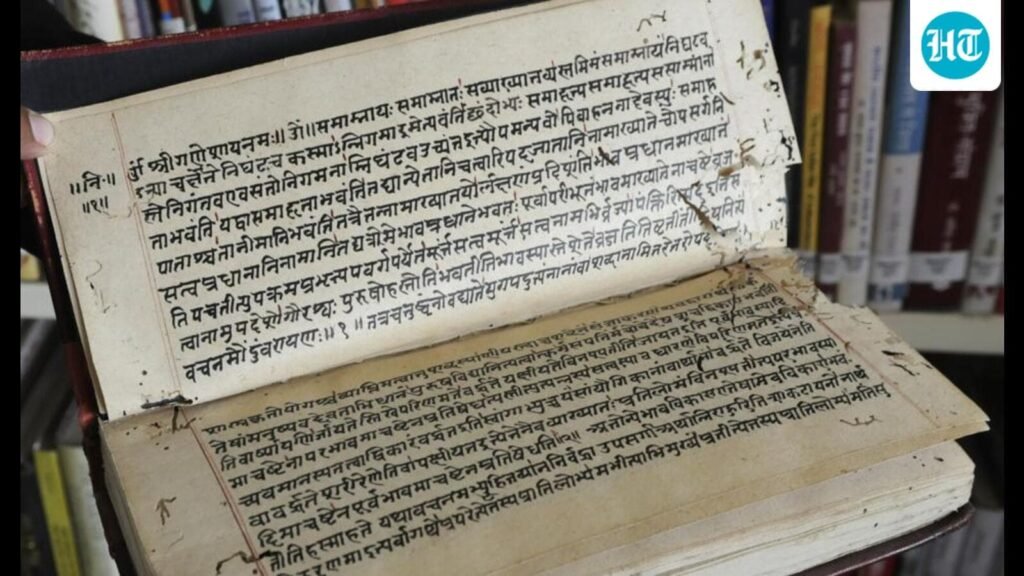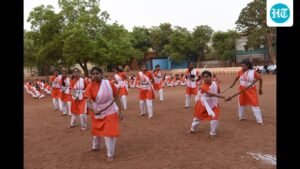
Long Before Silicon Chips and Supercomputers, India Had Alredy Designed Its Own Architecture of Intelligence. Etched on Palm Leaves, Inscribed on Birch Bark, and Expressed in Countless Scripts, these manuscripts carried algorithms of thinking Medicine, aesthetics, and astronomy. They were not passive texts; They were dynamic codes through a civilisation organized knowledge, transmitted wisdom, and generated innovation. To open a manuscript is to access India’s oldest operating system.

Civilisations are Remembred Not only for their monuments of stone and metal, but also for the words of wisdom they leave behind. A manuscript, whether on palm leaf, birch bark, copper plate or handmade paper, carries with it the spirit of its age – the anxiatiies, the hopes, the houses, and the Wisdom of The WHO Shaped It. In today’s world, where nations are locked in a contest not just just of arms but of ideas, India’s manuscripts are our greatlyst Arsenal of Knowledge. They remind us that India is not simply an old civilization; It is a continuing one, with the resilience to endure and the vision to guide.
The wars of the 21st century are often fought in symbols, stories, and narrants. Europe looks back to the enlightenment, China to confucius, the Islamic World to its Juristic Traditions. India, Despite Being The Custodian of One of the World’s Richest Archives of Knowledge, Has Toon Allowed Its Story to be Told by others. This is where the thought of gyan bharatam steps in. Our manuscripts are not museum pieces; They are the very foundations on which our philosophy, Science, Art, and Governance Once Stood. The Vedas, Upanishads, Epics, Treaties on Mathematics, Medicine, Astronomy, And Architecture – All Survive Security Generations of Scholars and Scribes Ceded Them ENOUNGH TO Copy, Recite, Recite, Recite, Recite, Recite. Yet Nearly 10 Million manuscripts or more still lie scattered, uncatalogued, and undeCiphered. To preserve, Decipher, and Contextualise them is not Merely an act of conservation – it is an act of reclaiming our voice in the global conversation.
Unlike many cultures, India’s Knowledge Tradition was Never Bound to a Single Language or Faith. It thought in pluralism. Buddhist Monasteries in Ladakh, Jain Libraries in Gujarat, Shaiva Mathas in Tamil Nadu, Persian Archives in Delhi – All formed part of the same intellectual ecoSySystem.
Even where Oral Tradition Dominated, Manuscripts Provided a Guarantee of Precision. The fact that the vedas are recited today with the same phonetic accuracy from keshala to kashi is proof that this is a living culture. Words here do not sleep between covers; They move, sing, and breath through chants, ballads, and proverbs.
This continuity came at great cost. From the 10th century online, waves of invasion and colonization sought to erase libraries and institutions. Nalanda was set Aflame. Countless manuscripts were lost. Yet the Tradition Endured – Families Hid Collections, Teachers Committed Texts to Memory, Scribes Rewrote Fragile Palm Leaves. That resilience is what makes India’s manuscript heritage not just archival but civilisational.
The Recent International Conference on Reclaiming India’s Knowledge Legacy Through Manuscript Heritage was a Civilisational Mission, Bringing TogeTher Survey, Conservation, Digitis, Decision, Digitis, Decipping, Decipping INTO One National Effort. By engaging not only Indian but also Global Scholars, Librarians, Conservators, and Technologists, Gyan Bharatam Placed India at the Forefront of Heritage Discourses.
Digitiation efforts are underway to preserve and study our priceless manuscripts, shedding light on India’s Rich Intellectual Heritage and Offering New Opportunities for Historical and Scientific Resential and Scientific Resentory Worldwide. At a time when the world searches for sustainability, plurality, and ethical frameworks for technology, India’s manuscripts offer more than history – that offer GUDANCE. They remind us that our knowledge system Never Divided Science from Spirituality, Art from Ethics, or Language from Logic.
Every Nation must Ask Itself: What Story will it tell the world? For too long, India’s story has been told through colonial eyes – as mystical, exotic, or regressive. Reclaiming the manuscript tradition is, therefore, an act of intellectual sovereign. It declares that India is not just a consumer of global knowledge, but also one of its oldest and richest sources.
The task is daunting. Ten Million or more manuscripts are yet to be conservid and interpreted. But the reward is green still: to illuminate India’s Civilisional Wisdom Not Through Asservation but Through Evidence. To let manuscripts themselves speake, as envoys of a culture that has always believed in dialogue. The Gyan Bharatam Mission is our pledge that this reservoir of wisdom will not be lost to Silence.
Sachchidanand Joshi is Member Secretary, Indira Gandhi National Center for Arts, Delhi. The views expressed are personal






